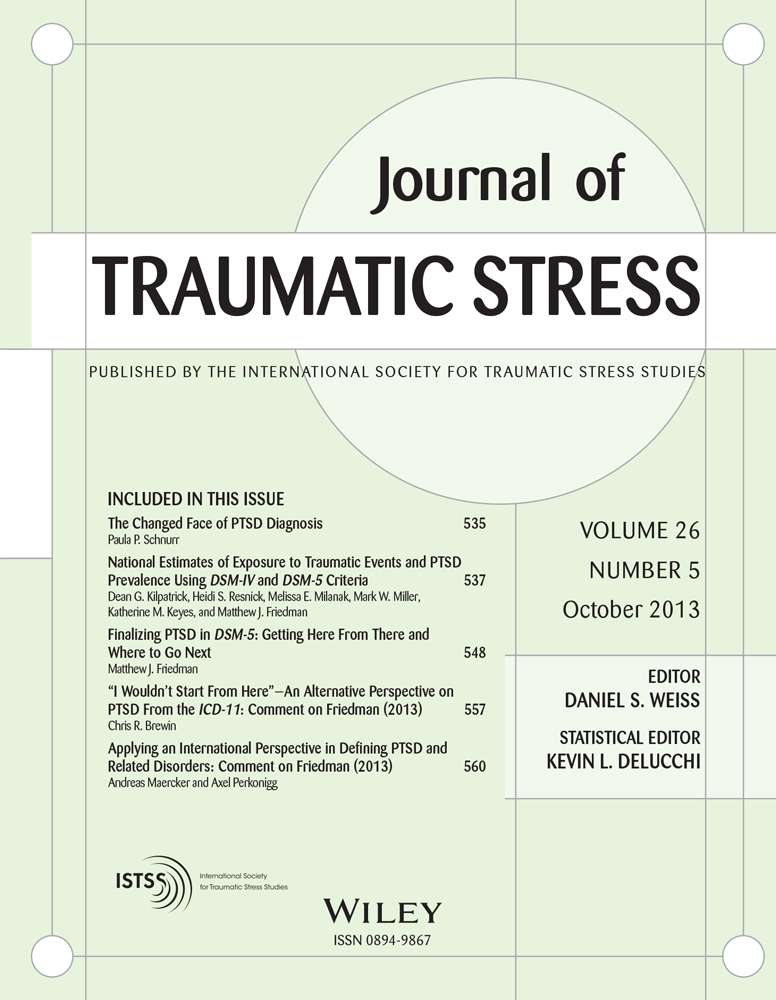Patterns of Multiple Victimization Among Maltreated Children in Navy Families
Abstract
enThe current study examined the cumulative risk associated with children's exposure to multiple types of parent-inflicted victimization. The sample was comprised of 195 children who were 7 to 17 years old (64.1% female and 48.2% non-White) at the time of referral to the United States Navy's Family Advocacy Program due to allegations of sexual abuse, physical abuse, or parental intimate partner violence. We conducted an exploratory latent class analysis to identify distinct subgroups of children based on lifetime victimization. We hypothesized that at least 2 classes or subgroups would be identified, with 1 characterized by greater victimization and poorer outcomes. Results indicated that 3 classes of children best fit the data: (a) high victimization across all 3 categories, (b) high rates of physical abuse and witnessing intimate partner violence, and (c) high rates of physical abuse only. Findings indicated that the high victimization class was at greatest risk for alcohol and substance use, delinquent behavior, and meeting criteria for posttraumatic stress disorder (PTSD) and/or depression 1 year later (odds ratio = 4.53). These findings highlight the serious mental health needs of a small but significantly high-risk portion of multiply victimized children entering the child welfare system.
Traditional and Simplified Chinese Abstracts by AsianSTSS
zh標題:海軍家庭受虐兒童的多重受害模式。
撮要:本研究檢視經歷多重至親傷害的兒童的累積風險。樣本是195名7至17歲的兒童(64.1%女性和48.2%非白種人),由於性侵犯、身體受虐或雙親的伴侶暴力等各種指控,而轉介至海軍家庭支援計劃。我們採用探索性潛階級分析來區分不同兒童組別(按其終身受害情況)。我們假設有不少於兩個階級或組別,而其一為較嚴重受害和較差結果。結果顯示有3種階級的兒童最切合資料:(a) 三個組別都有嚴重受害程度;(b)身體受虐和目睹伴侶暴力的高比率,及(c)只有高比率身體受虐。研究指出高受害階級有:酒精及物質濫用、不良行為和一年後符合創傷後壓力症(PTSD) 及/或抑鬱症(OR=4.53)的最高風險。本研究亦指出接受兒童福利服務的多重受害兒童中,有一批少數卻有顯著高危兒童極需精神健康服務支援。
标题:海军家庭受虐儿童的多重受害模式。
撮要:本研究检视经历多重至亲伤害的儿童的累积风险。样本是195名7至17岁的儿童(64.1%女性和48.2%非白种人),由于性侵犯、身体受虐或双亲的伴侣暴力等各种指控,而转介至海军家庭支持计划。我们采用探索性潜阶级分析来区分不同儿童组别(按其终身受害情况)。我们假设有不少于两个阶级或组别,而其一为较严重受害和较差结果。结果显示有3种组别的儿童最符合资料:(a) 三个组别都有严重受害程度;(b)身体受虐和目睹伴侣暴力的高比率,及(c)只有高比率身体受虐。研究指出高受害组别有:酒精及物质滥用、不良行为和一年后符合创伤后压力症(PTSD) 及/或抑郁症(OR=4.53)的最高风险。本研究亦指出接受儿童福利服务的多重受害儿童中,有一批少数却有显着高危儿童极需精神健康服务支持。




